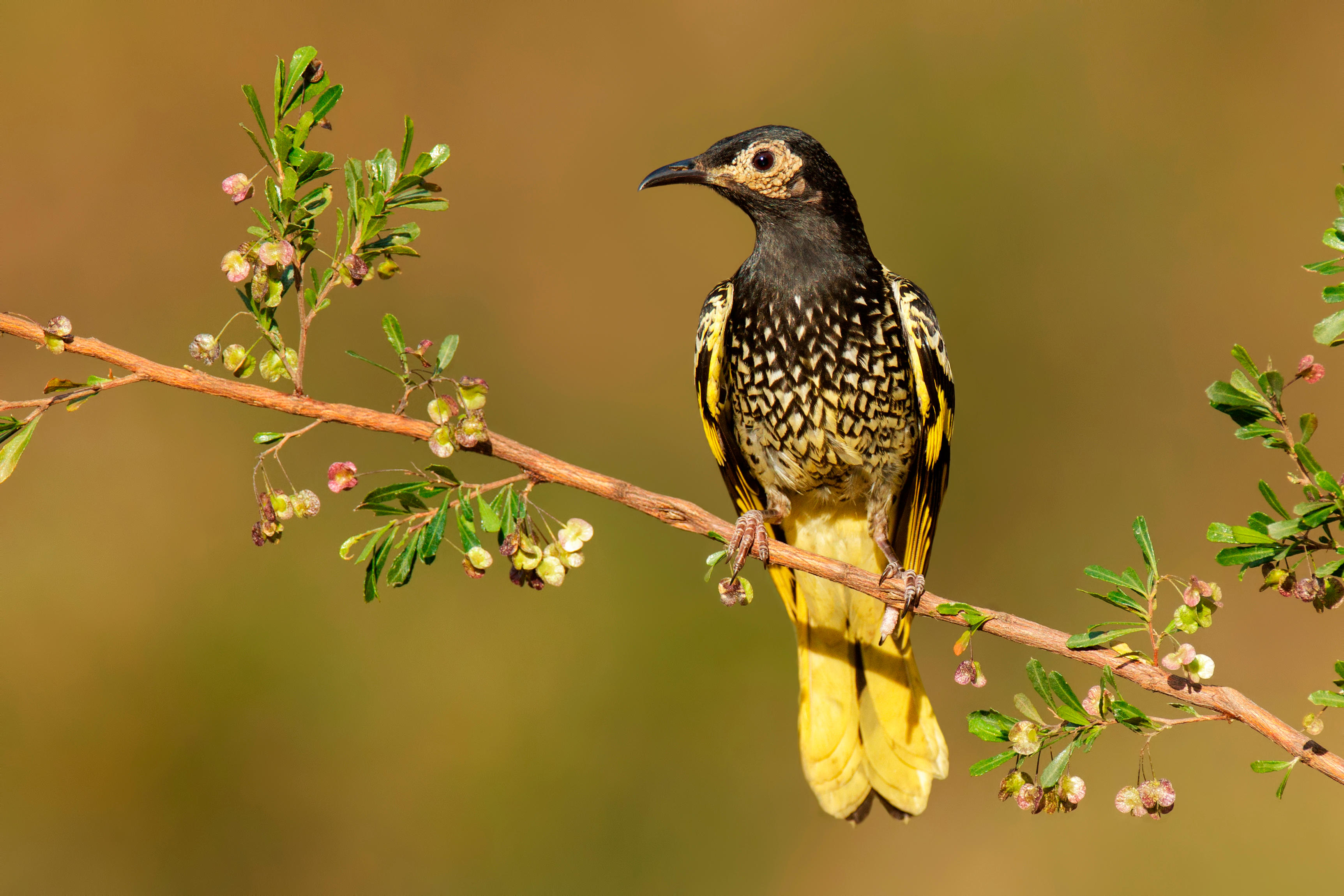Reaching out to the Regent Honeyeater
Aim
The “Reaching out to the Regent Honeyeater” project aims to stabilise or improve the trajectory of the Regent Honeyeater by 2023. The Regent Honeyeater is nationally listed as Critically Endangered.
The project will increase the knowledge of the abundance of birds and their location within the Central West. This project will enhance and restore Regent Honeyeater foraging habitat through grazing management, pest animal control, and weed control on private and public land.
The Pilliga Nature Reserve, Warrumbungle National Park, the Goonoo State Conservation Area and National Park, Burrendong Dam, and the Weddin Ranges are the priority areas for this project.
Species overview

Image: Regent Honeyeater. Credit: Dean Ingwersen
The Regent Honeyeater has striking yellow plumage on its back and wings, with a black head, neck and upper breast. It is a medium-sized honeyeater, about 23 cm long and weighs up to 50g as an adult.
The Regent Honeyeater range is limited to the inland/western slopes of the Great Dividing Range, and coastal regions of the Hunter Valley and Central Coast of NSW. Widespread clearing of woodland habitat has seen their numbers decline to less than 500 birds.
Regent Honeyeater feeds mainly on nectar and other plant sugars. It can also feed on insects and spiders, as well as native and cultivated fruits.
The Regent Honeyeater is found in eucalypt forests and woodlands, particularly in blossoming trees and mistletoe.
Why is it threatened
Loss of key habitat and foraging tree species such as Mugga Ironbark, Yellow Box, White Box and Swamp Mahogany contributes to the population decline of the species. Lowland fertile woodland areas have been cleared for agriculture and residential activity, reducing the extent of nesting and foraging habitat.
The small population size and restricted habitat availability make the species highly vulnerable to extinction due to loss of genetic diversity.
WEBINAR: Reaching Out to the Regent Honeyeater, June 2022
Case study: Reaching out to the Regent Honeyeater – Jillie and Will Arnott “Coolah Creek”
Will and Jillie Arnott were very interested in protecting good quality remnant habitat on their sheep and cattle property “Coolah Creek” adjacent to Coolah Tops National Park in NSW. As a priority area for the critically endangered Regent Honeyeater, the Arnott’s had an underutilised large remnant area containing critical habitat for the Regent Honeyeater that they were keen to protect.
How you can help
The project will be undertaken in collaboration with Birdlife Australia and the Australian National University (ANU) under the National Regent Honeyeater Monitoring Program (NRHMP).
A key component of the project is to increase understanding and capacity of the community to be able to identify the Regent Honeyeater and the threats to their habitat, and engage landowners to actively manage and monitor the Regent Honeyeater habitat on their land.
- The community can get involved through community engagement events, or by bringing your binoculars and participating in our bird surveys.
- You can also record sightings through the Birdata website or app.
This project is supported by Central West Local Land Services, through funding from the Australian Government’s National Landcare Program.
Project contact
For further information, please contact your local natural resource management team member on 1300 795 299.